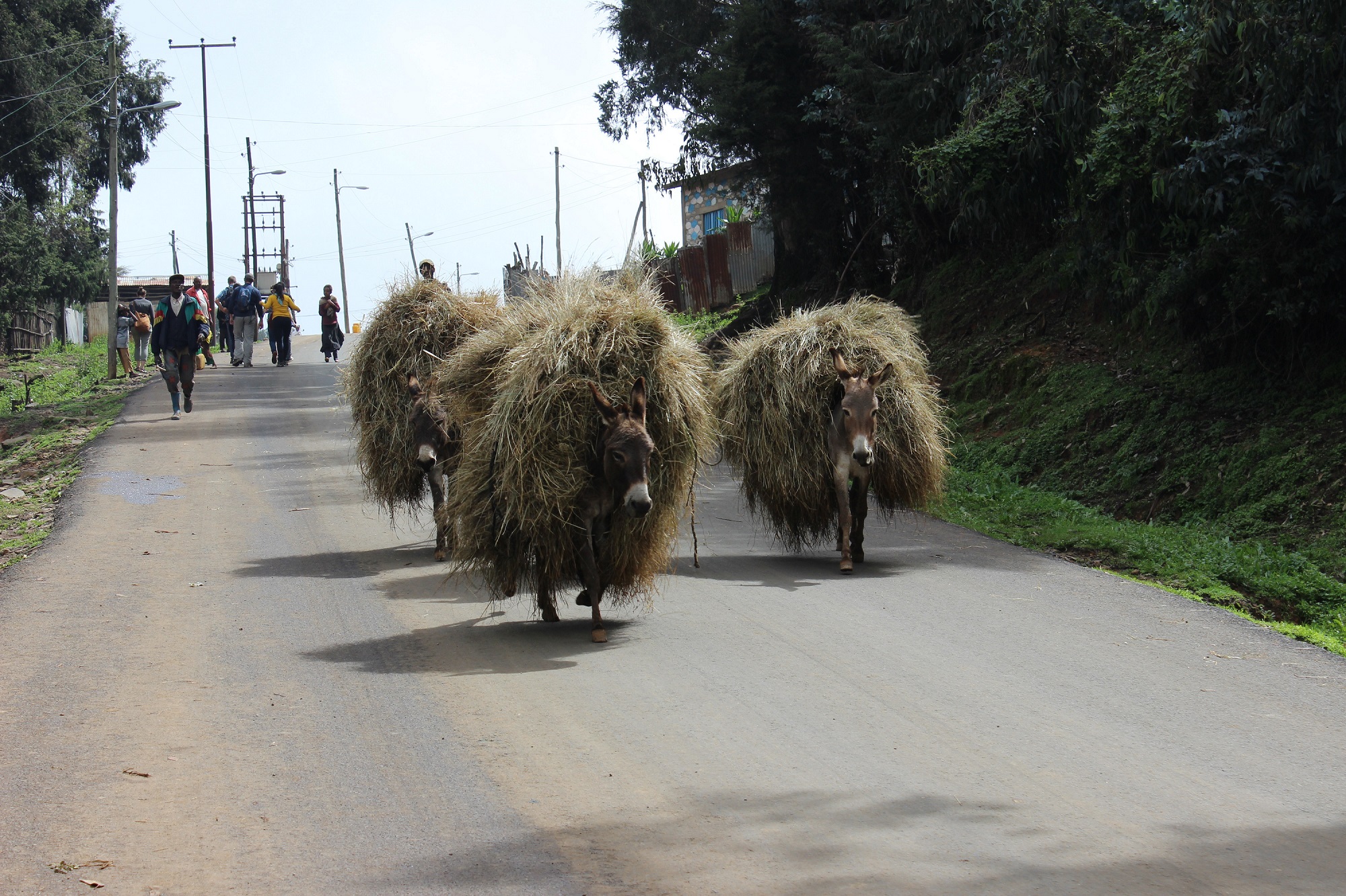Ethiopia is a vast country with terrain that varies from deserts to lush green jungles. During my time in country, there was one aspect that stood out no matter where in Ethiopia I traveled: donkeys. Donkeys were everywhere. No, not the blue donkey taxis–the living and breathing animal kind. I could usually spot them grazing next to a busy road or even in the middle of the road; seemingly oblivious to the cars zooming past. They could be found throughout the capital city and in most rural areas. It quickly became obvious to me during my stay in Ethiopia that donkeys were vital to the everyday life of many Ethiopians.
Ethiopia is one of the poorest countries in the world, where a large portion of the country is in desperate need of assistance to climb out of poverty. People, understandably, are the main focus of all aid funding coming into Ethiopia. There is very little, if any, assistance going towards maintaining the health of donkeys and other livestock. However, upon further research, I found that donkeys serve a key role in the Ethiopian economy by maintaining the livelihoods of people all over the country. They are used by rural farmers as well as urban merchants. The donkeys carry essentials such as water, hay and cinder blocks, can pull a cart transporting people to and from their villages or a mountain of hay or firewood. They are largely used as transportation in rural areas and are used alongside small taxis in mid-sized urban areas.
Strictly from my observation, it looked as though most of the donkeys were overworked and underfed. They were used to carry very heavy loads, such as upwards to 5 or 6 cinder blocks, on their backs with little to no padded protection. A report found that people often fully or partially depended on donkeys for income generating opportunities, but did not feed them properly or maintain their health.
As a result of this lack of care, the donkey’s work output greatly declines. I often saw them being whipped or drinking stagnant water. I also witnessed the tying up of one of a donkey’s front legs to keep it from wandering off, but creating difficulties for the animal to graze in the process. I rarely saw any shelters for donkeys or any of the other animals. They were typically kept outside, and have to fend for themselves during harsh rainy-season storms or against wild hyenas.
After some research, I found two non-profits who work in Ethiopia educating Ethiopians on the proper treatment of donkeys and other livestock as well as the need for veterinary care. The Donkey Sanctuary maintains 4 vet clinics as well as mobile clinics throughout the country. The Brooke aims to educate and work with communities and local governments towards better equine welfare.
Veterinary care does exist in the country and there are veterinary schools. However, a culture of caring for animal welfare is not prioritized in Ethiopia. I often saw stray dogs and sheep being mistreated in Addis Ababa. I found the lack of consideration for the donkeys’ welfare surprising because of its importance to people’s livelihoods.
In addition to donkeys, there are horses, cattle, sheep and goats, as well as a large population of stray dogs and cats within urban areas. Like the donkeys, most appear underfed and mistreated. I was told by a coworker that animals are generally not kept as pets in Ethiopia, but are kept only if they serve a purpose; like the donkey for transportation, cattle for food and dogs for protection. Animal welfare goes largely unnoticed and is not subject to many, if any, regulations. While this area should not be prioritized over problems facing people living in the country, it is an area that should be studied because of these animals’ direct effect on people. Healthier and well treated donkeys could be a factor that helps alleviate poverty. This was not a topic I was planning on discussing in a blog, but after observing these animals for months, I realized how integral donkeys and other animals are to people’s lives and how much people depend on them. While we in the western countries rely on our cars or public buses, people in rural Ethiopia rely on their donkey.

